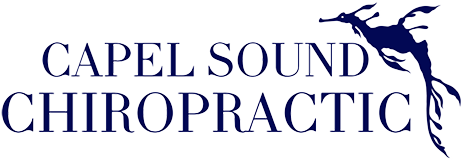A bulging disc can start as nothing more than a dull ache in your lower back or neck, but it can quickly turn into something more limiting. When one of the discs between your spinal bones shifts out of place, it presses against nearby nerves, causing pain and stiffness that may extend into the arms or legs. Some people notice sharp sensations when they sit or stand for long periods. Others find it harder to twist, bend or lift things without discomfort.
It’s no surprise that many people begin looking for answers when simple activities start feeling harder. Chiropractic care is one option that’s gained attention for helping people manage this kind of pain. Rather than using medication to mask the problem, chiropractic treatment focuses on the alignment of the spine and aims to relieve pressure where it starts. For those dealing with this type of discomfort, it can offer a targeted approach that supports the body’s natural healing process.
Understanding Bulging Discs
To picture what’s happening with a bulging disc, think of the spinal discs as small cushions sitting between your vertebrae. They’re there to give your spine flexibility and absorb force as you move. Over time, or due to an injury, the outer layer of the disc can weaken. When that happens, the inner part starts pushing outwards, making the disc bulge. If this presses on a nearby nerve, it often triggers pain that travels down the body.
It’s easy to confuse a bulging disc with a herniated one, but they’re different. A bulging disc happens when the disc shifts without tearing. A herniated disc means the inside of the disc has broken through the outer layer. Both conditions can cause pain, but the type of discomfort and the treatment options can vary depending on the issue’s severity.
Signs you might be dealing with a bulging disc include:
1. Ongoing pain in the lower back or neck
2. Tingling or numbness in arms, legs, hands or feet
3. Muscle weakness on one side
4. Difficulty standing up straight
5. Pain that worsens when sitting, sneezing or coughing
While some people try to manage the discomfort on their own, a disc that’s out of place often requires more than rest. It might ease for a short time but usually returns if left untreated. That’s why it’s important to take action early and seek the right help.
How Chiropractic Care Works
Chiropractic care is based around the idea that when your spine is aligned properly, the rest of your body is more likely to function at its best. When something’s off in the spine, like a disc that isn’t sitting right, it can place extra stress on the surrounding muscles and nerves. Chiropractic treatment helps restore alignment, which in turn may reduce pressure on the disc and calm down the nearby nerves.
Different methods may be used depending on your needs, symptoms, and how long the issue has been going. Common techniques include:
– Spinal adjustments to gently realign the spine and improve mobility
– Traction or decompression therapy to create space between vertebrae and ease nerve pressure
– Guided exercises to strengthen supportive muscles and improve range of motion
Before starting treatment, a chiropractor will usually take a full history and perform an assessment. This can involve a physical exam, testing reflexes and movement, and referring for scans if more information is needed. Their goal is to understand your condition clearly before putting a safe and suitable plan in place.
Rather than using a harsh or aggressive method, chiropractors use controlled and gentle techniques aimed at improving flow and reducing blockages. Over time, this may help the disc return toward its normal position and ease the strain on surrounding nerves and joints.
Benefits Of Chiropractic Treatment For Bulging Discs
When a bulging disc is causing pain, even small daily tasks can feel overwhelming. Getting out of bed, climbing stairs, or driving for long periods might leave you feeling sore and stiff. Chiropractic care aims to not only ease this discomfort but also improve how your spine functions over time.
With regular care that fits your needs, adjustments may help your spine move more freely and feel more balanced. This can take pressure off the affected disc and offer relief from the constant tightness or ache.
Some common benefits people notice from chiropractic treatment include:
– Less nerve compression: Adjustments help release pressure from nearby nerves
– More freedom of movement: Activities like walking, turning, or stretching become easier
– Better posture: Consistent care can improve how your body holds itself during daily tasks
– Fewer pain medications: Addressing the root issue reduces dependence on quick fixes
– Stronger spine support: Paired exercises strengthen areas that may have weakened over time
Often, the cause of disc trouble is more than just one thing. Posture habits, stress, old injuries, or wear and tear can all add to the problem. A chiropractic plan looks at what’s happening across your whole spine, not just the painful spot, to build better overall support and function.
What To Expect During A Chiropractic Visit
If it’s your first time seeing a chiropractor, you might wonder what the visit involves. The process begins with a conversation about your symptoms and when they started. The chiropractor may ask what makes the pain worse, where it travels, and how you’re managing it day to day. These questions help form a bigger picture of your condition.
Next comes a hands-on evaluation. This usually involves checking your posture, testing how the spine moves, and gently feeling where tension or misalignment may be sitting. Depending on your case, the chiropractor may suggest imaging like an X-ray to examine any underlying changes in the spine before starting treatment.
Once they understand what’s going on, they’ll explain their findings and recommend a course of care. If chiropractic care for bulging disc issues is suitable, treatment might begin during that first or second visit.
A typical session might involve:
– Targeted spinal adjustments to realign affected areas
– Traction to relieve pressure around nerves and discs
– Release techniques to ease muscle tightness
– Exercises you can do at home to support long-term changes
– Advice on posture, sleep, or workstation setup to aid recovery
Each session builds on the changes made in the last. The number of visits needed can vary depending on your age, general health, and how long the issue has been present. Progress is usually steady, with the goal of helping your body settle into better patterns naturally so you can move more comfortably through your week.
Moving Forward With Confidence And Less Pain
Living with a bulging disc doesn’t mean you have to limit what you enjoy or accept daily pain as the norm. When the spine starts to move and function the way it should, many people find new confidence in their day-to-day routines. Whether it’s a stroll through Melbourne, a family gathering, or a more restful night’s sleep, better spinal health opens the door to more comfort and freedom.
Pain often means something in the body is working too hard, not working together, or not healing well. By guiding your spine back into balance with hands-on care, chiropractic treatment gives it the best chance to recover. Therapy is adapted to where you are in your healing process and evolves as your mobility improves.
If you’ve been dealing with the symptoms of a bulging disc and haven’t found lasting relief, chiropractic care offers a way forward that supports your recovery without relying on medication or surgery. With the right guidance and steady care, it’s possible to feel stronger and more comfortable again.
If you’re ready to explore the benefits of feeling less pain and moving more freely, consider starting with chiropractic care for bulging disc issues. At Capel Sound Chiropractic, we focus on helping you regain your life without discomfort by tailoring treatment to your body and situation.





